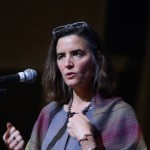April 4, 2017
Weaving and Cognition
April 4, 2017
3:30-5:30pm
Fayerweather 411
A conversation with Prof. Pamela Smith (Seth Low Professor of History and Director of the Center for Science and Society) on weaving and embodied cognition ahead of the conference Weaving: Cognition, Technology, Culture (April 5 – April 8).
Please note that while there are several selected readings listed below, many are relatively short and we encourage you to familiarize yourself with as much as you can for the meeting.
Short essays on weaving:
- Virginia Postrel, “Losing the Thread,” Aeon (June 2015)
- Benjamin Gross, “The French Connection,” CHF Collections (Fall 2015)
- B. Syama Sundari, “Handlooms Are Dying – and It’s Because of Our Failure to Protect Them,” The Wire (21/03/2017)
- Malafouris, L. (2013). How Things Shape the Mind: A Theory of Material Engagement. Cambridge, Massachusetts: MIT Press. [chapter 7] Link
- Iliopoulos, A. & D. Garofoli. (2016). The material dimensions of cognition: Reexamining the nature and emergence of the human mind. Quaternary International, 405, 1–7. Link
- Kneebone, R. Discovery through Doing, Nature 542,294 (16 February, 2017) doi:10.1038/542294a Link
- Shapiro, L. (2007) The Embodied Cognition Research Programme. Philosophy Compass 2/2, 338–346, 10.1111/j.1747-9991.2007.00064.x Link
Access all readings here.
 Pamela H. Smith is Seth Low Professor of History at Columbia University and Founding Director of the Columbia Center for Science and Society. At Columbia, she teaches history of early modern Europe and the history of science. She is the author of The Business of Alchemy: Science and Culture in the Holy Roman Empire (Princeton 1994; 1995 Pfizer Prize), and The Body of the Artisan: Art and Experience in the Scientific Revolution (Chicago 2004; 2005 Leo Gershoy Prize). Her work on alchemy, artisans, and the making of vernacular and scientific knowledge has been supported by fellowships at the Wissenschafts-Kolleg, as a Guggenheim Fellow, a Getty Scholar, a Samuel Kress Fellow at the Center for the Advanced Study of the Visual Arts in Washington, DC, and by the National Endowment for the Humanities, the Andrew Mellon Foundation, and the National Science Foundation.
Pamela H. Smith is Seth Low Professor of History at Columbia University and Founding Director of the Columbia Center for Science and Society. At Columbia, she teaches history of early modern Europe and the history of science. She is the author of The Business of Alchemy: Science and Culture in the Holy Roman Empire (Princeton 1994; 1995 Pfizer Prize), and The Body of the Artisan: Art and Experience in the Scientific Revolution (Chicago 2004; 2005 Leo Gershoy Prize). Her work on alchemy, artisans, and the making of vernacular and scientific knowledge has been supported by fellowships at the Wissenschafts-Kolleg, as a Guggenheim Fellow, a Getty Scholar, a Samuel Kress Fellow at the Center for the Advanced Study of the Visual Arts in Washington, DC, and by the National Endowment for the Humanities, the Andrew Mellon Foundation, and the National Science Foundation.